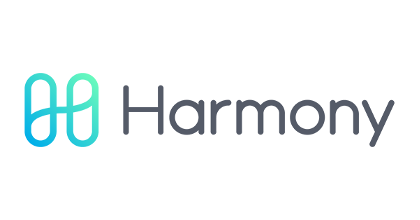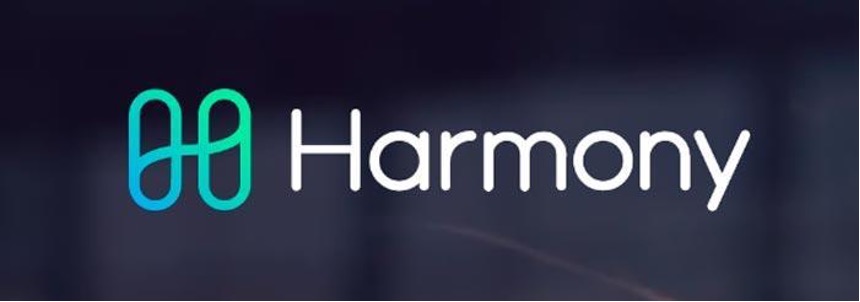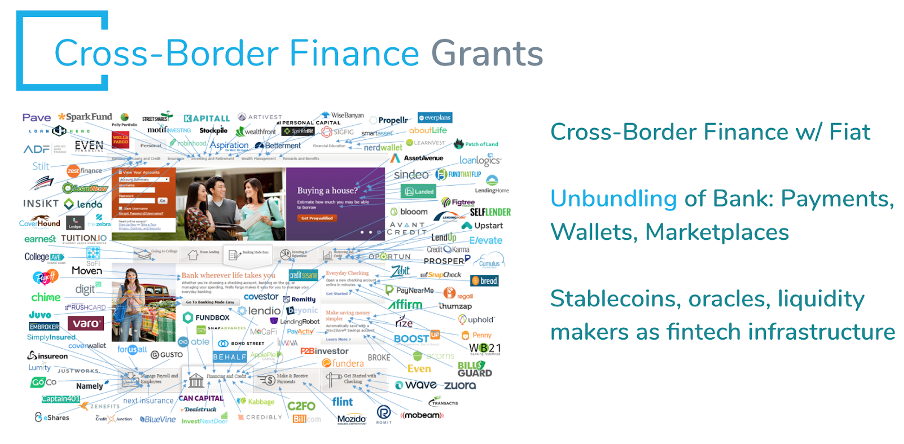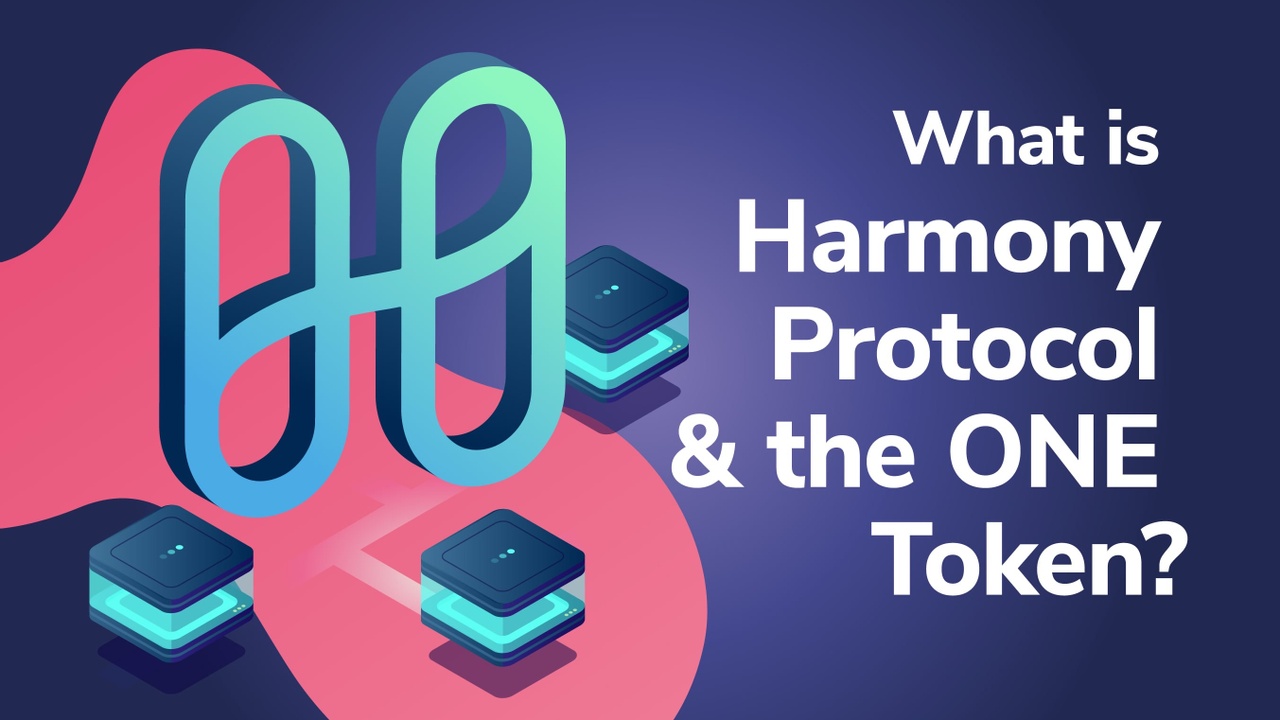
Harmony is an interoperable sharding protocol offering a two-way Ethereum bridge. Powered by the Harmony One token (ONE), the Harmony blockchain is an independent blockchain designed to enable ultra-fast transactions and interoperability as an advanced layer-2 solution for Ethereum. Harmony makes it easy for developers to build and scale creative, intuitive decentralized applications (dApps) that enable frictionless, cross-chain token swaps.
In this article, we’ll discover the depths of the Harmony protocol and how it is offering scalability for Ethereum as an interoperable layer-2 solution. Moreover, we’ll explore sharding, and how the Harmony blockchain operates using a unique consensus algorithm. Furthermore, we’ll explain how the Harmony ONE token is used within the protocol’s ecosystem.
Understanding how blockchain technology works can be daunting for beginners. However, Ivan on Tech Academy has you covered! If you want to learn about the fundamental principles of blockchain, our Blockchain & Bitcoin 101 course is the perfect place to start your journey!
Also, if you want to dig a little deeper into how the technology behind Harmony works, be sure to check out the Ethereum 101 course at Ivan on Tech Academy, the number one blockchain education suite online!
What is Harmony?
Harmony was designed as an interoperable layer-2 scaling solution for Ethereum. The Ethereum blockchain is the second-largest blockchain in existence and is host to over 80% of decentralized applications (dApps). Ethereum was the first smart contract-enabled blockchain and has shown continued strength and growth since launching in 2015. However, in recent years Ethereum became the victim of its own success with high network usage resulting in delayed bottlenecked transactions and substantially higher gas fees.

Blockchain developers have designed innovative layer-2 scaling solutions to combat this issue. Additionally, Ethereum is in the process of rolling out the Ethereum 2.0 upgrade which, once complete, will be able to facilitate up to 100,000 transactions per second (TPS). This will drastically reduce congestion, however, it is still months away from completion.
In the meantime, Harmony has created an interoperable sharding protocol, with a two-way Ethereum bridge. Harmony operates as a dedicated external layer-2 scaling solution for Ethereum, created as its own blockchain. From a developer’s perspective, building on Harmony is almost exactly the same as Ethereum, using the Solidity programming language and Ether.js. Moreover, from a user’s perspective, traders can expect two-second transaction finality and can seamlessly swap digital assets between the Harmony and Ethereum blockchains. Plus, the Harmony bridge can facilitate both decentralized finance (DeFi) and non-fungible token (NFT) applications.
Harmony & ONE Token Background
Harmony is the brain-child of Dr. Stephen Tse, a skilled cryptographer and a core developer of Google Maps. Dr. Tse has previously sold a start-up to Apple for seven figures, before subsequently being hired to work for Apple. After a couple of years, Dr. Tse left in 2015 to pursue his passion for blockchain technology.
Following his departure, Dr. Tse developed his own programming language ‘Min’ to build blockchains. After collating a team of other experienced blockchain developers and professionals, Harmony was founded in 2018. Harmony raised over $20 million from both private investors and Binance Labs to develop the Harmony protocol. Harmony’s native ONE token was launched through a Binance initial exchange offering (IEO) in May 2019. The mainnet for Harmony went live the following month, in June 2019.
How Does The Harmony Protocol Work?
Harmony was designed from the ground up to solve the blockchain trilemma of security, scalability, and decentralization. Additionally, Harmony was created with the added dimension of privacy too, referred to as the “fourth trilemma” by Dr. Tse.

Similar to Ethereum’s ERC-20 and ERC-721 token standards, Harmony has its own familiar token standards, HRC-20 and HRC-721, for cryptocurrencies and non-fungible tokens.
Decentralization
Though Harmony is not yet entirely decentralized, this is a key goal of the project. Harmony intends to create a decentralized, open network community of nodes known as Pangaea. Currently, there are around 1,000 Harmony nodes. Approximately 64% of these nodes are part of the Pangaea community. As the Pangaea community expands with the gaining popularity of the project, this will further increase the decentralization of the Harmony project.
In the future, Pangaea will be responsible for governance and voting on protocol updates. The Pangaea community is made up of validators from over 100 countries. Also, for most of these validators, this is the first time they have ever run a node. This is building a dedicated, connected community from the ground-up, working and learning together to make decentralized finance (DeFi) accessible to all.
Sharding
The design of the Harmony blockchain has been influenced by both the Ethereum and Cardano blockchains. Harmony blockchain is a sharded blockchain with four shards at present: the beacon chain (shard 0) and shards one, two, and three. Each shard can support up to 250 validators, meaning the Harmony network has a current upper limit of 1,000 network nodes.

Harmony boasts an average of 2,000 transactions per second (TPS). Moreover, in a Harmony team AMA with Asia Block Review, the team stated, each new shard on the network will bring 500 additional TPS. The team aims to achieve 2,000 shards that could facilitate 1 million TPS across the Harmony network.
Technically speaking, Harmony was the first successful launch of a sharded Proof-of-Stake blockchain. Many developers have been creating innovative solutions for the tricky task of interoperability between shards. However, the Harmony team has devised a solution by maintaining the same blockchain state across multiple shards. This allows transactions between different shards to be near-enough the same speed and gas price as same-shard transactions. Moreover, this allows users to hold funds across multiple shards at the same time. Before swapping assets between the Harmony protocol and Ethereum, it’s a good idea to gain an understanding of how Web3 wallets, such as MetaMask, work.

Check out the Crypto Basics course at Ivan on Tech Academy to learn how to safely buy, sell, store, and trade tokens. Then, if you want to learn how to navigate the world of decentralized finance (DeFi), make sure to check out the DeFi 101 course. This course is designed to help you make the most of popular decentralized applications (dApps) and DeFi protocols!
Consensus Algorithm
Harmony uses a unique consensus algorithm known as Effective Proof-of-Stake (EPoS). The consensus mechanism incorporates improved innovations of the Practical Byzantine Fault Tolerance (PBFT) to create the Fast BFT (FBFT). This allows near-instant finality and low transaction fees.
Harmony additionally makes use of both a verifiable random function (VRF) and verifiable delay functions (VDF) to ensure verifiable randomness with validators staking on the network. What’s more, this also prevents front-running.
Similar to Cardano’s staking pool Saturation Parameter, Harmony uses a mechanism to prevent heavily-invested validators from corrupting a single shard. This mechanism breaks up large stakes from a single validator by reducing staking rewards. In turn, this incentivizes validators to split their ONE token stake across more profitable shards.
Harmony ONE Token
Oiling the entire machinery, the Harmony ONE token keeps the Harmony ecosystem running smoothly. The token was named “ONE” with a vision of “For One and For All”. Harmony and the ONE token were created with the goal of scaling an ’open consensus’ for 10 billion people.

Harmony’s ONE token is used to pay for fees across the network and for staking to secure the Harmony blockchain, with participants receiving rewards for doing so. In the future, we can also expect the ONE token to be used for governance across the Harmony protocol.
Originally, Harmony presented a dynamic inflation schedule of the ONE token in their whitepaper. However, this changed to a fixed annual inflation rate in March 2020. At present, there are 441 million ONE tokens minted each year.
The circulating supply shown on CoinGecko suggests there are 9.2 billion out of 12.6 billion circulating ONE tokens. However, this is an estimate as there is no circulating supply shown on the Harmony block explorer. This is largely down to the fact that the ONE token is available as both an ERC-20 token on the Ethereum blockchain, and as a BEP-2 token on Binance Chain.
In January 2020, Harmony made it possible for ONE token holders to swap their ERC-20/BEP-2 tokens for the native HRC-20 Harmony ONE token. There doesn’t appear to be a time limit for the conversion, with on-chain insights showing active BEP-2 and ERC-20 ONE tokens across various exchanges.
Staking Harmony ONE Tokens
Harmony offers a shallow barrier to entry for new validators and delegators on the network. Validators are required to stake a minimum of 10,000 ONE tokens (approximately $1,160 at the time of writing). Validators are nodes used to confirm transactions and validate blocks on the Harmony blockchain. On the other hand, delegators are users who wish to participate in the network without running a full node. Delegators delegate their ONE token stake to a chosen validator and earn a percentage of block rewards for doing so. Delegators require a minimum stake of 1,000 ONE tokens, around $116 at present.

Validator nodes are randomly assigned to one of the four shards every epoch. Epochs last for approximately 18 hours, during a period in which the Beacon chain produces a set number of blocks. On the Harmony mainnet, an epoch is 32,768 blocks on the Beacon chain (Shard 0). This helps time-stamp validations across multiple shards processing simultaneously, however, they are not synchronized and have multiple block heights.
Staking Rewards
Rewards vary depending on the percentage of a participant’s ONE token holdings that are staked. This can range from 9% APY for 95% of a user’s ONE token supply staked, to 150% APY for 5% of ONE token holdings staked. Staked ONE tokens are subject to an unlocking period of seven epochs (approximately every six days).
Any bad actors seen double-signing transactions will receive double-slashing of their stake and be removed from the network. However, validators are not slashed for downtime, with a generous margin for validator uptime. Validators that are down will just stop producing blocks and receiving rewards.
Harmony ONE tokens are burned with each transaction. Moreover, 50% of the ONE tokens taken as a slash penalty from bad actors on the network, are also burned. The Harmony protocol utilizes a “path to 0 issuance” as the protocol gains adoption. The issuance of new tokens is, therefore, offset by transaction fees and bad-actor penalties.
However, the ONE coin is technically not deflationary. This is because the tokens burned from transaction fees and penalty fees are taken from the 441 million coins introduced into circulation through annual rewards.
Why Use Harmony Blockchain?
In July 2020, Harmony announced a grant scheme offering $7 million to various developers building on the Harmony blockchain. Harmony has a strategic focus on seven areas of development, including decentralized applications (dApps), portals, ZKProof, and community. In addition to this, the firm also offers grants over a six-week period following milestones of development. The first week starts with application deployment on the testnet, with the sixth week finishing by gathering market feedback from the application deployed on the Harmony mainnet. There have been 12 successful grants given thus far.

Moreover, in October 2020 Harmony released Horizon, a two-way bridge between Ethereum. Alongside this, Harmony also launched Swoop, the native decentralized exchange (DEX) on Horizon. Although these developments didn’t make the headlines in the crypto news, these innovations are crucial to implementing blockchain for mass adoption. As such, simplifying the user experience for cross-chain activity has become a priority for most crypto projects.
The ONE token saw positive price action following Harmony’s announcement of its integration with MetaMask in February 2021. The ONE token has seen a 40X increase in price since the start of the year, making ONE a top-performing project of 2021. More exciting announcements on Harmony’s roadmap include non-custodial wrapped Bitcoin on the Harmony blockchain plus integrations with Polkadot.
Harmony Blockchain & ONE Token Summary
Harmony is creating an innovative and interoperable layer-2 scaling solution for Ethereum. Additionally, this is done in a way that’s familiar for developers when building on the Harmony blockchain. Moreover, the two-way Ethereum bridge allows near-instant, almost-free digital asset swap transactions between the Harmony and Ethereum blockchains.

A few years ago, there were some hesitations around the project, when the ONE web browser extension wallet was hacked, resulting in millions of stolen ONE tokens. The ONE team offered a bounty for the hacker who had identified the vulnerability. However, there is no information about a resolution around this case available. Moreover, Harmony’s lack of presence in the crypto media may present a challenge for achieving adoption.
This being said, the team is continuously working on the developments of the Harmony protocol, with constant updates and activities. This bodes well for the future of the ONE token and the adoption of the Harmony protocol during the 2021 Bitcoin bull run, from both a user and a developer’s perspective. Harmony is expanding and interoperating with the most reputable smart contract-enabled blockchains in the industry.
If you want to learn how to build decentralized applications (dApps) on Harmony, be sure to check out the Ethereum programming courses at Ivan on Tech Academy. Starting with the Javascript Programming for Blockchain course, you can gain a foundational understanding of how blockchain programming works. Then, if you want to take your game to the next level, the Ethereum Smart Contract Programming 101 is the ideal next step. From here, you’ll be fully equipped with all the knowledge needed for the Ethereum Smart Contract Programming 201, Ethereum Game Programming, and the Ethereum Smart Contract Security courses! With video-guided tutorials and hands-on exercises, there is no better way to immerse yourself in the world of blockchain!





